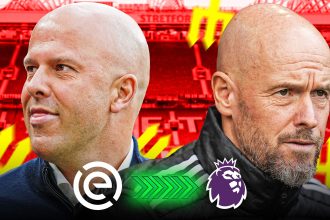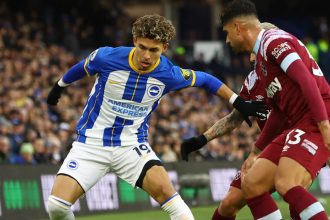Legislation, NIL deals, academies and the elimination of the draft are reshaping the role of colleges in U.S. women's soccer
For generations, young girls who loved soccer could dream of playing at a high level in America, but rarely beyond the college years. Unlike their male counterparts, the idea of pursuing soccer as a profession simply wasn’t an option.
It wasn’t until the early 2000s, with the launch of the Women’s United Soccer Association in 2001, that professional soccer became a legitimate career path for women in the U.S. Although the league was short-lived, its arrival and – and a decade later, the establishment of the National Women’s Soccer League in 2013 – changed the landscape of the sport in the country.
Collegiate athletes weren’t facing a hard stop at graduation. This shift not only elevated the level of play at the collegiate level, but also transformed how young players, coaches, and families approached the game. College soccer remains a legitimate path for female players in the country to launch professional careers, even as the opposite is happening for the men's collegiate game.
The steady rise of Major League Soccer and the investment in MLS academies has created alternative routes that now dominate the development system, putting men's college soccer at a crossroads.
On the women's side, there is crossroads of a different type – the NWSL eliminated the college draft, opening up more direct pathways for aspiring pros, especially for younger players. Still, college soccer in the U.S. overall remains healthy – in fact, there are 330 women's Division 1 collegiate programs.
"College soccer is the best option for female soccer players to go pro," Andrea Morrow, assistant soccer coach at Boston College, told INDIVISA. "Fortunately, for women's soccer players, they are not required to complete a certain number of years or semesters before entering their pro career."
Getty ImagesCollege soccer still holds value
In the U.S., college soccer is still the most common avenue for aspiring professionals. For decades, it was the only route.
"Research shows that women soccer players typically reach their peak between the ages of 25 and 30," Morrow said. "Those who enter college at 17 or 18-years-old and graduate in four years are looking at being 21 or 22, which is still a few years before they would reach their 'peak.'
"Some would argue for developmental purposes it's best that they go to college because this provides them the luxury of maximizing their time without having to sacrifice an education or funds, regardless of scholarship, as athletic departments provide nutritional benefits, athletic training, professional coaching, mental health support, etc."
Morrow, who played and now coaches college soccer, said the opportunity goes beyond just developing athletic skills. It's also about education.
"Females and their families value education," she said. "In today's world, the pay for a short career is not more valuable than a degree that will set them up for a majority of years."
International players also play at the college level in the U.S. Rachel Daly, an English international who could have played for a top club academy in her home country, instead opted to attend St. John's in New York to play Division 1 soccer. She was drafted sixth overall in 2016 by the Houston Dash.
Similarly, Deyna Castellanos, a Venezualan international, left her country to play for Florida State and was later awarded a professional contract with Atlético Madrid and ultimately played in the NWSL.
"Until there are viable professional academies for women's pro clubs in the U.S., college is still the route to women's professional soccer," said Amphone Keovongmanysar, associate head coach for the Columbia University women's soccer team.
AdvertisementGetty ImagesNWSL academies
Youth academies are a vital part of the men's game, with 29 MLS academies currently running alongside 122 other elite academies under the MLS NEXT umbrella. These academies serve as the main feeder for MLS semi-pro and pro teams. On the women's side, there are only five youth academies paired with NWSL teams and they all operate under different systems.
Those five clubs include the North Carolina Courage, Portland Thorns, Houston Dash, Racing Louisville and Seattle Reign. Each club have their own age groups and methods, and unlike the men's side, the academy teams play in external leagues. The biggest leagues for female amateur players in the U.S. are the Girls Academy and ECNL.
Each year, there are a handful of women's players who forgo college soccer and go straight to the pros. Those players are typically playing up several age groups for club teams that compete in ECNL and Girls Academy top divisions.
Mallory Swanson was one of the first notable players to make the choice to bypass the collegiate game. She played in the ECNL for Real Colorado and was committed to play collegiately at UCLA, but instead turned pro in 2016 when she joined the Washington Spirit. That launched her career full speed ahead, with her USWNT debut coming later that year.
More recently, players such as Trinity Rodman and Alyssa Thompson – both powerhouse stars for the USWNT – opted to directly turn pro. And while those are notable exceptions, it's not necessarily a trend. That said, an expansion of academies on the women's side could change the status quo.
"Academies could create an alternate pathway to go pro," Morrow said, "but this would / could put a financial strain on professional clubs. They would be responsible to provide the resources for those years between the players' youth careers and professional careers."
Getty ImagesName, Image and Likeness
Rachel Breton, a former professional player for Sky Blue FC (now NJ/NY Gotham FC), has been coaching for years. Asked about the importance of college soccer, and the pathway to pro for female players, Breton says "College soccer is pretty critical," adding that "unlike the NWSL, you don't see a lot of older players in the MLS."
Haleigh Drake, a coach for Cedar Stars in the ECNL and at Stevens College, stressed that playing collegiately has numerous benefits, but that it is not the lone route to the professional game, especially for rising young talent.
"College soccer gives you a great professional experience post-club soccer, a competitive high-risk habitat and exposure to NWSL scouts and clubs," she said. "However, that's not the only way to the pros. While college is the most 'elite' playing experience you'll get at the moment, it's not the only way to get to the pros. I think 3 or 4 years ago it was college then pro. Now, it's whoever is good enough, straight to pro."
Complicating matters is legislation over name, image and likeness, which took effect in 2021. Four years into the new age of college sports, where athletes are allowed to profit from their successes through NIL deals, everyone is still trying to find out what the new normal will be. The complex, often murky, world of NIL has touched every corner of college sports.
NIL permits collegiate athletes to monetize their personal brand through endorsements, public appearances, and commercial partnerships. So players who previously sought to turn pro earlier in their careesr now have the possibility of being compensated while playing collegiately. The largest NIL payments tend to come in college football and basketball, but the value of deals for women's soccer players has increased.
That's an important to note when you consider that in 2013, when the NWSL was first formed, the best players were making $30,000 or less. And while NWSL salaries have grown dramatically, NIL deals at the collegiate level present players with more financial options. In fact, it's providing opportunities to players even before they reach the collegiate level.
LOTTO / Lucas Flores Piran'It means a lot to be their first'
Loradana Paletta may just be 14-years-old, but she's beyond experienced when it comes to turning heads on the soccer field. When she's not breaking ankles with her quick feet and ability to accelerate and decelerate on a dime, she's making ground-breaking moves off the field.
In July, Paletta became first NIL partner for Italian sportswear brand LOTTO. The then-middle schooler out of Syosset, New York began playing soccer when she was 4, and now, 10-plus years later, she's in high school and a standout member of the U.S. Youth National Under-17 team. Partnering with LOTTO was an opportunity for Paletta to invest in her journey to become "a pro."
"It means a lot to be their first," Paletta told INDVISA. "It's a big thing to take in, to carry, but it means I'm doing it with them."
That came less than a year after Nike signed 13-year-old soccer phenom McKenna "Mak" Whitham to NIL, making her the youngest women's soccer player – and youngest athlete in any sport at the time – to sign an NIL deal with Nike.
"It means everything to me," Whitham told ESPN. "And it motivates me even harder. I mean, not every kid gets to get signed by Nike."
And it goes beyond NIL. In June, a federal judge approved terms of a sprawling $2.8 billion antitrust settlement that will upend the way college sports have been run for more than a century. In short, schools can now directly pay players through licensing deals – a concept that goes against the foundation of amateurism that college sports was built upon.
The settlement calls for roster limits that will reduce the number of players on all teams while making all of those players – not just a portion – eligible for full scholarships. This figures to have an outsize impact on college sports such as soccer, which don’t produce as much revenue as, say, college football.
Last month, 10 Democratic members of the U.S. House of Representatives asked the NCAA how college sports’ major governing body plans to protect the interests of female athletes, as the largest portion of NIL and revenue-sharing payments continue to be directed to male athletes. The NCAA said its investment in women’s sports has “continuously and significantly increased in the last several years.”






